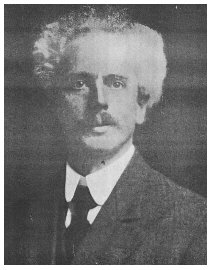
Robert Hope-Jones
Encyclopedia

Theatre organ
A theatre organ is a pipe organ originally designed specifically for imitation of an orchestra. New designs have tended to be around some of the sounds and blends unique to the instrument itself....
in the early 20th century. He thought that a pipe organ
Pipe organ
The pipe organ is a musical instrument that produces sound by driving pressurized air through pipes selected via a keyboard. Because each organ pipe produces a single pitch, the pipes are provided in sets called ranks, each of which has a common timbre and volume throughout the keyboard compass...
should be able to imitate the instruments of an orchestra
Orchestra
An orchestra is a sizable instrumental ensemble that contains sections of string, brass, woodwind, and percussion instruments. The term orchestra derives from the Greek ορχήστρα, the name for the area in front of an ancient Greek stage reserved for the Greek chorus...
, and that the console should be detachable from the organ
Organ (music)
The organ , is a keyboard instrument of one or more divisions, each played with its own keyboard operated either with the hands or with the feet. The organ is a relatively old musical instrument in the Western musical tradition, dating from the time of Ctesibius of Alexandria who is credited with...
.
Among his innovations were a kind of electro-pneumatic action
Electro-pneumatic action
The electro-pneumatic action is a control system for pipe organs, whereby air pressure, controlled by an electric current and operated by the keys of an organ console, opens and closes valves within wind chests, allowing the pipes to speak. This system also allows the console to be physically...
, the Diaphone and the modern Tibia Clausa
Tibia Clausa
A Tibia Clausa is a large-scale, stopped wood flute pipe, usually with a leathered lip. Tibia Clausas provides the basic foundation tone of the organ with few overtones or harmonics. The Tibia Clausa is arguably the most important rank of pipes in a theatre pipe organ, with some organs having as...
with its strong 8′ flute tone. The Tibia eventually became a staple of theater organs. The thunderous 32′ Diaphone was less successful, but made an impression on audiences of the era.
Hope-Jones organs were also noted for such innovations as stoptabs instead of drawknobs and very high wind pressures of 10″ – 50″ to imitate orchestral instruments. He used expression liberally, sometimes enclosing the entire organ behind thick swell shades for great expressive power. He also used a system of unification which multiplied considerably the number of stops relative to the number of ranks.
He built 246 organs between 1887–1911 and his company employed 112 workers at its peak. Hope-Jones eventually merged his organ building operations with Wurlitzer
Wurlitzer
The Rudolph Wurlitzer Company, usually referred to simply as Wurlitzer, was an American company that produced stringed instruments, woodwinds, brass instruments, theatre organs, band organs, orchestrions, electronic organs, electric pianos and jukeboxes....
in 1914. Shortly thereafter, Robert Hope-Jones ended his life by suicide in Rochester, New York, frustrated by his new association with the Wurlitzer company, it is said.
Few Hope-Jones organs have survived to the present time. Probably the largest and most complete example in the UK is the partially restored 1901 organ at Battersea Old Town Hall, now the home of BAC (Battersea Arts Centre). The organ at the Great Auditorium in Ocean Grove, New Jersey
Ocean Grove, New Jersey
Ocean Grove is an unincorporated community and a census-designated place in Neptune Township, Monmouth County, New Jersey. It had a population of 3,342 at the 2010 census. It is located on the Atlantic Ocean Jersey Shore, between Asbury Park to the north and Bradley Beach to the south...
, built by Hope-Jones in 1908, has most of its original Hope-Jones ranks still intact and playable, although it has been vastly enlarged since then. Another fully preserved Hope Jones organ is his opus 2 at the First Universalist Church in Rochester, New York, which has been described as sounding "weighty and lush", with large-scaled 8′ stops. The Anglican Cathedral of St. Johns The Baptist, St. John's Newfoundland is home to the only Robert Hope-Jones organ ever installed in Canada(Built in 1904). The organ was rebuilt by Casavant in 1927, however many original components remain.
All Saints' Church, Upper Norwood had an interesting example of a three manual Hope-Jones organ within a parish church setting, complete with diaphones and Wurlitzer-style console; it was hoped that it might be restored at some point in the future but the organ has now been dismantled. However, the historic Hope-Jones 16ft open wood rank complete with chest from All Saints' Church was moved in February 2011 to West Ashling Chapel belonging to The Clock Trust, where it is on public display with many other Hope-Jones pipes from this organ.
There is also part of the great organ in Worcester Cathedral in the UK. In recent work only one Hope-Jones rank of pipes Viol d'Orchestre has been retained. As long ago as the early 1970s the diaphones were disconnected/removed and the solo division (Tuba Mirabilis. Tuba Sonora -revoices? and orchestral oboe were removed). Built in front of a Saxon window, there have been divisions with the Victorian Society about the historical importance of the organ as opposed to the accessibility of the window.

